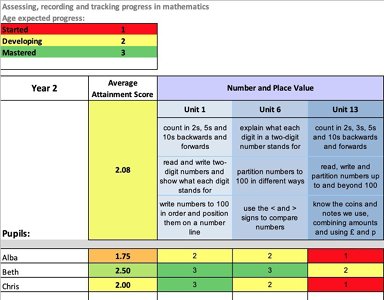Talking to teachers about their maths planning for KS1 and KS2 in September, it is obviously a concern. Primary age children will have had many different experiences in their maths learning since March and will be more spread in their depth of understanding and knowledge than in previous years.
So what do I recommend? Most importantly, you need to ascertain what the children already know, understand and can do. That is no different to every September (and before each new topic), but this is a unique situation and more time needs to be spent on assessing the class. Use practical tasks and problem-solving ‘Assessment for Learning’ activities that give you the chance to observe the children and listen to them explain the mathematics. Formative assessment is key here, building up a picture of their understanding.
I would focus on number and calculation in most of the first half-term as the lines of progression are the most complex for these. Measures, geometry and statistics can be (and should be) used as a context, but it would be more useful to you to assess the number understanding within these areas.
Tracking individual children and identifying gaps in their understanding is important. You then need to consider ways of ‘fast-tracking’ those with gaps through intervention or teaching earlier steps than expected if the majority of the children show they need this.
All of this relies on you having a really good feel for the small steps of progression in each maths topic and an understanding of the best models and images to help primary children make sense of the mathematics. You also need a bank of practical, reasoning and problem-solving activities that give the children a chance to explore and give you a chance to assess.
Using the Broadbent Maths Menu
The Maths Tracker works alongside the medium-term plans or unit plans, and is based on the expected outcomes of each unit. Use the provided unit plans, AfL activities, the problems and activities and the small steps of progression to pitch the maths at an accessible point and don't move on too quickly - make sure the children have a good depth of understanding before going on to the next step. You can then keep your own tracking record of Started, Developing or Mastered for each child and for each unit on the Maths Tracker Excel file.
The Education Endowment Foundation carried out a 'Rapid Evidence Assessment' on the Impact of school closures on the attainment gap.
Key findings and implications include:
-
School closures are likely to reverse progress made to close the gap in the last decade since 2011.
-
Supporting effective remote learning will mitigate the extent to which the gap widens.
-
Sustained support will be needed to help disadvantaged pupils catch up.
Maths Tracker
To support teachers using the Broadbent Maths Menu, there is a Maths Tracker to download for the assessment and record keeping of individual children in each year group.
Progress is assessed against the expected outcomes identified within each unit. The progress of each child is monitored against these outcomes to help determine if they have 'mastered' the skill, concept or procedure.
There is a menu of 'Started', 'Developing' and 'Mastered' for outcomes, based on expectations for each year. In terms of reporting we use a points system for each criteria:
Started =1
Developing = 2
Mastered = 3
This then determines an Average Attainment Score (AAS) for each child and for the class or year group.
The average is shown to two decimal places, with a score of 2 being around age-expected progress. So, for example, 2.53 by the end of the year would indicate that a child is progressing well. They are about midway between Developing and Mastered. A score of 1.24 shows that a child is below age expectation. This kind of information can be compared year on year and help to inform school progress tracking systems. The most important thing, though, is that the tracking against the expected outcomes of each unit helps teachers see the areas of strength or learning gaps to focus on.
Tackling the disadvantage gap during the Covid-19 crisis
Children’s Commissioner April 2020
"Monitoring attainment should not involve an increase in the number of exam-condition tests children are expected to complete, but can be based on classroom assessment. We know that children in the UK are already among the most stressed and examined in all of Europe. September will be a critically important time for schools to be identifying those children who fell behind in the complete lockdown. Children who have fallen behind need to be provided with intensive support to address this – whether online or in the classroom. Government will need to make additional funding available for this – e.g. by increasing pupil premium funding or introducing a new Catch Up Premium and requiring schools to demonstrate their systems for identifying which children most need help. This funding will need to be in place by the start of September, when schools will be dealing with the consequences of the full lockdown."



